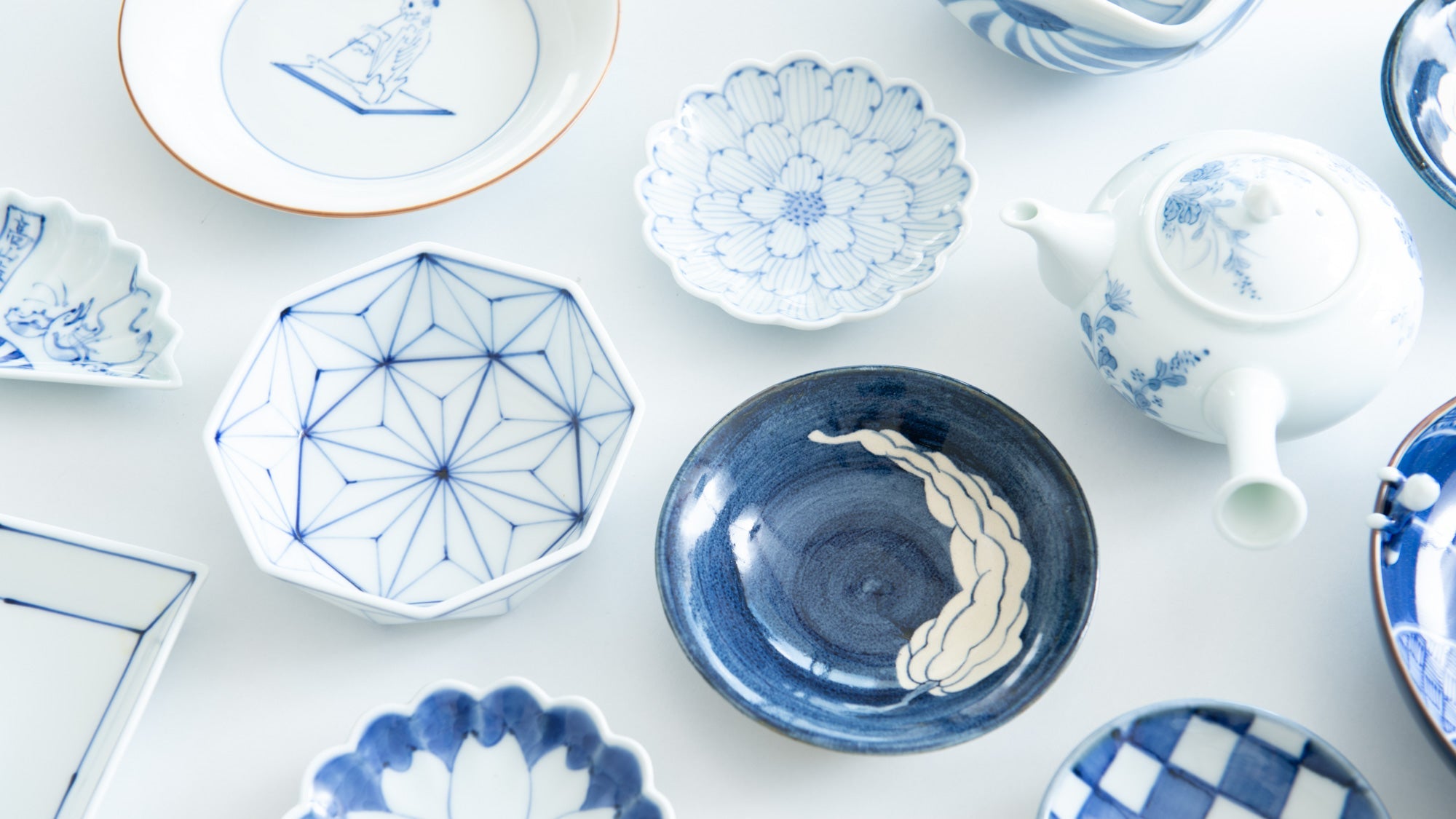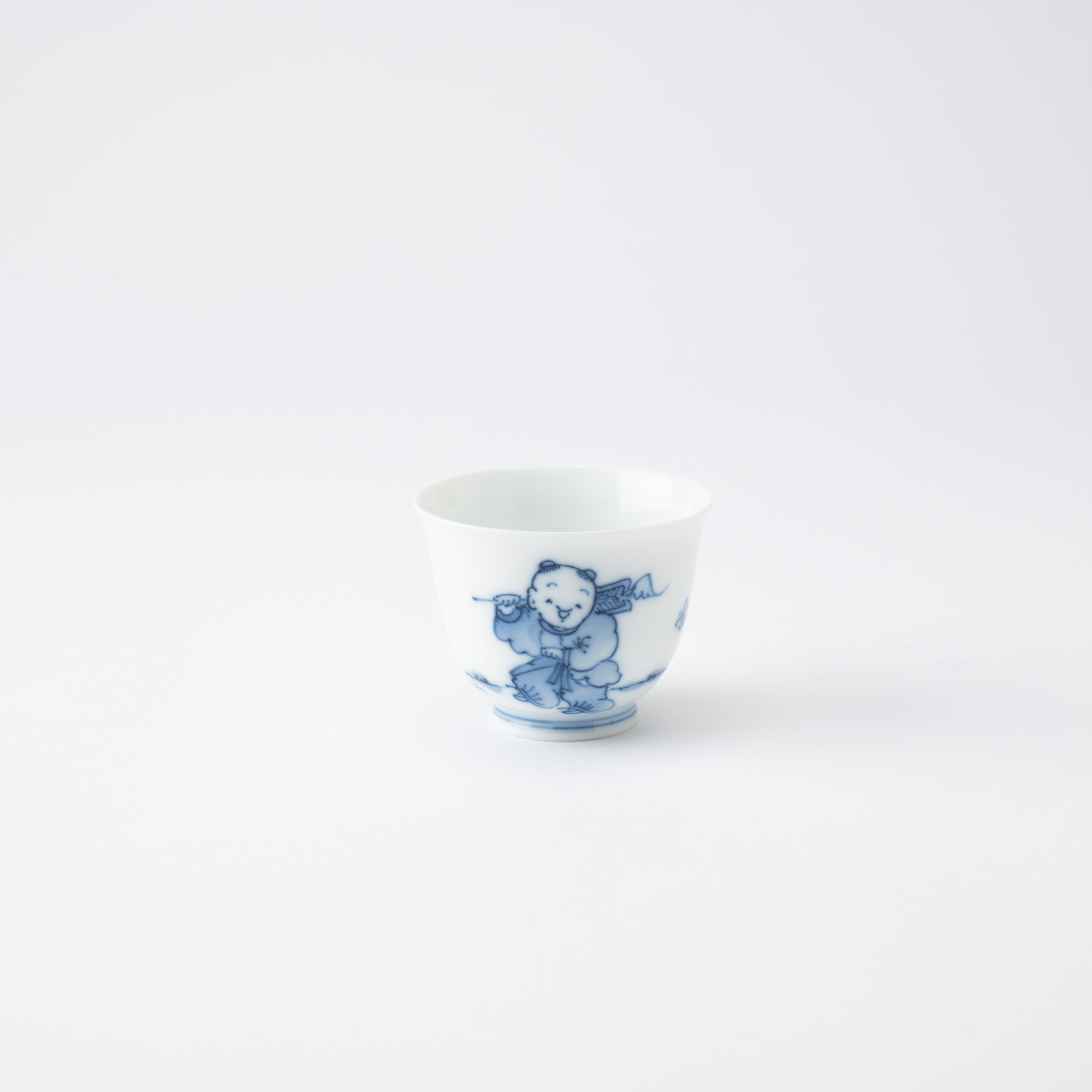
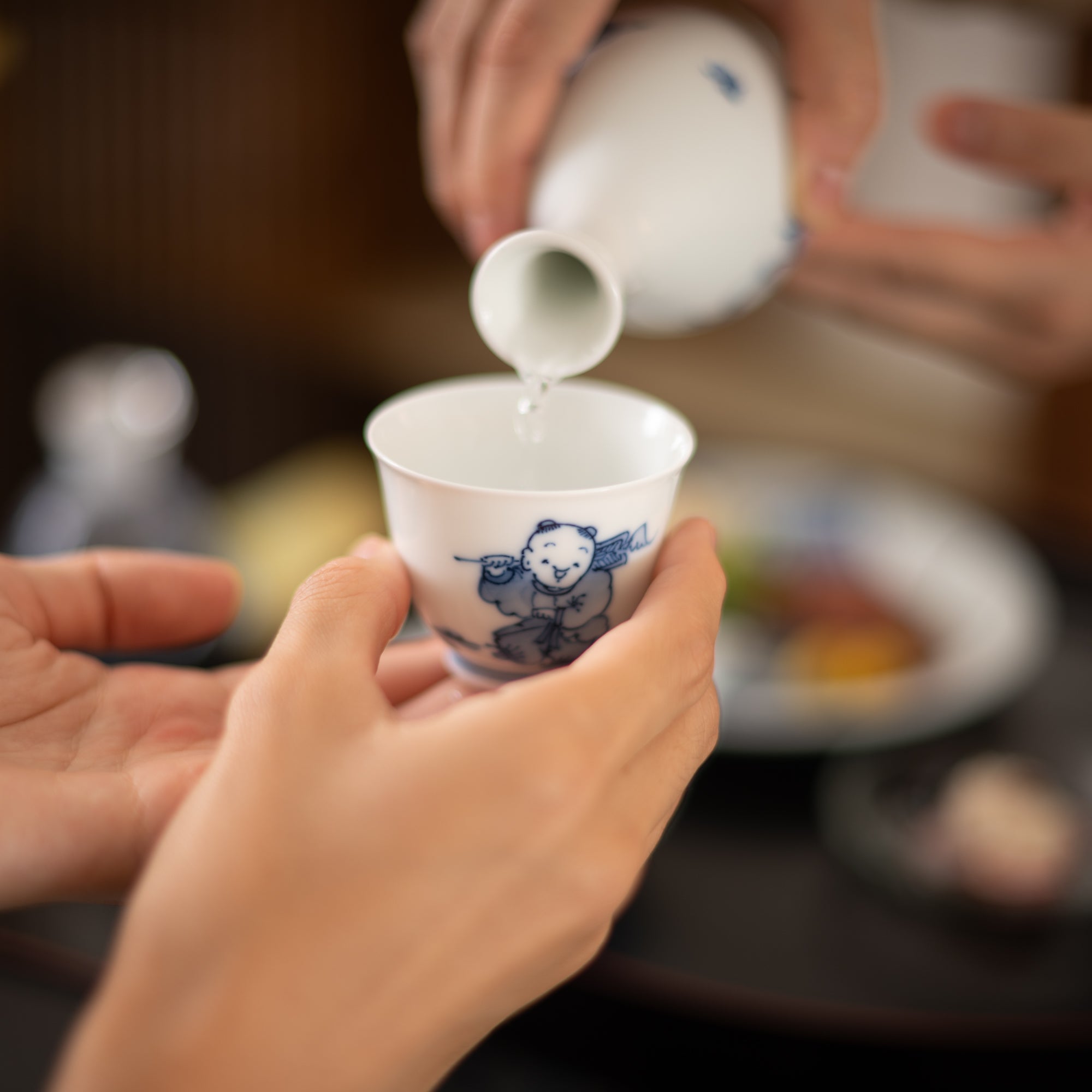
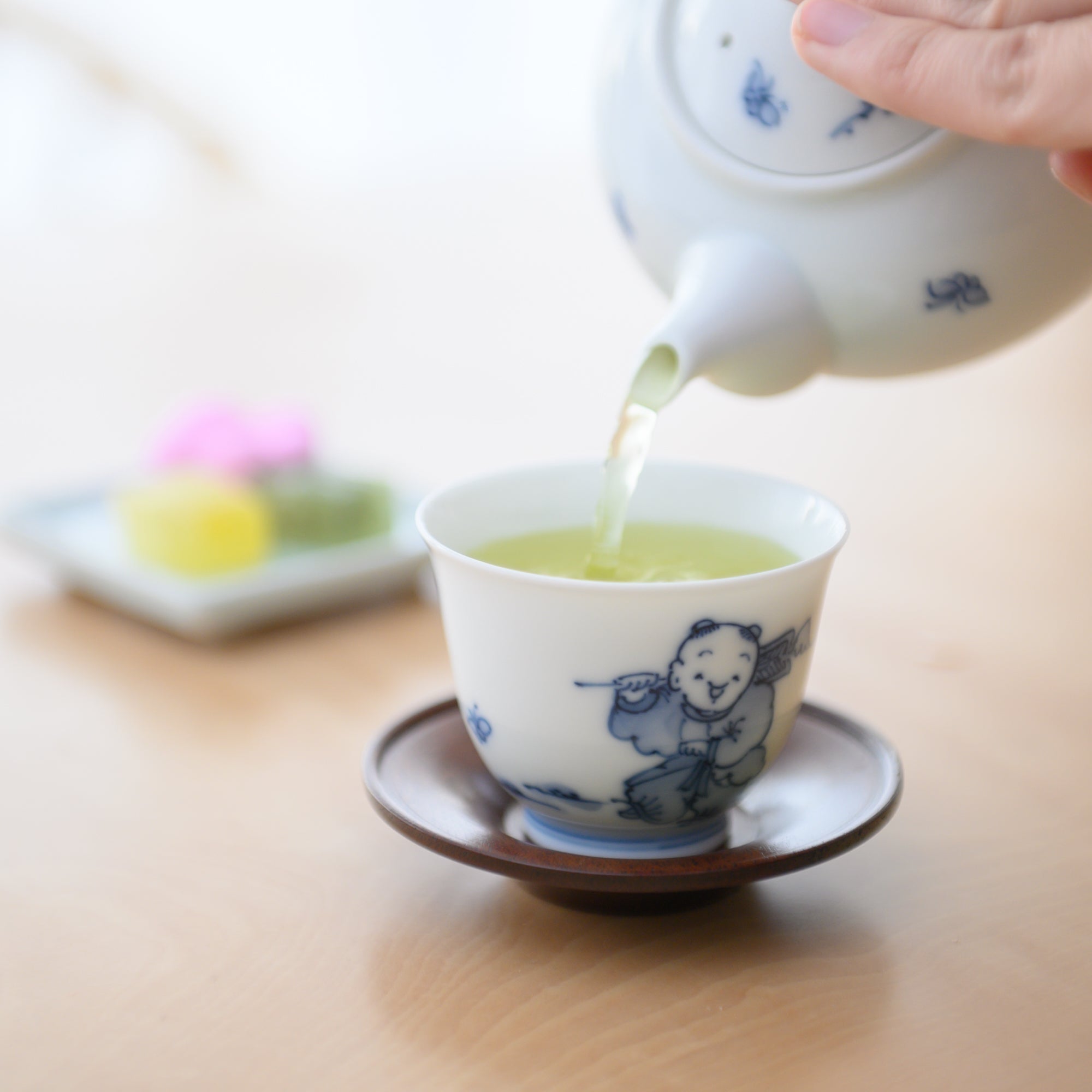
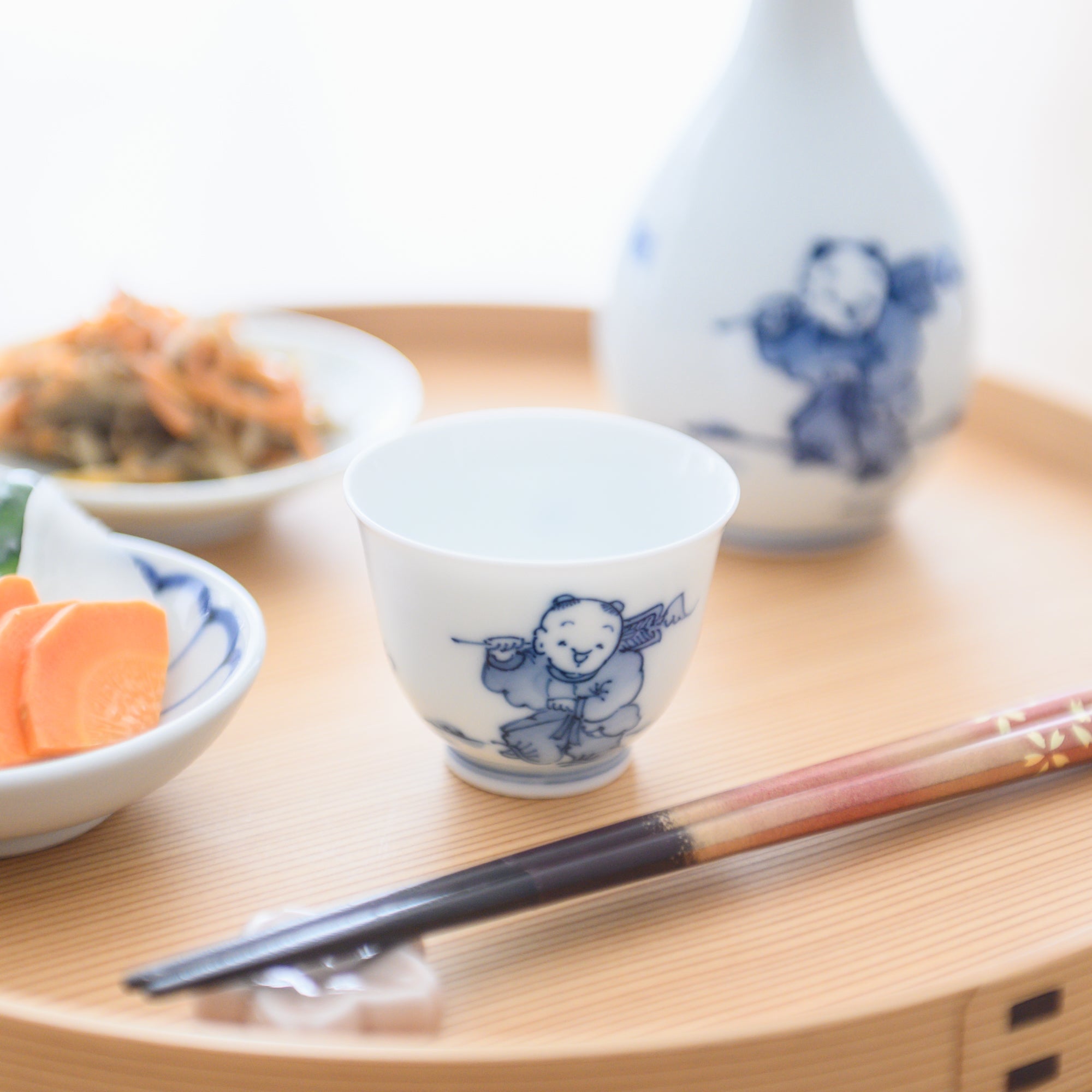
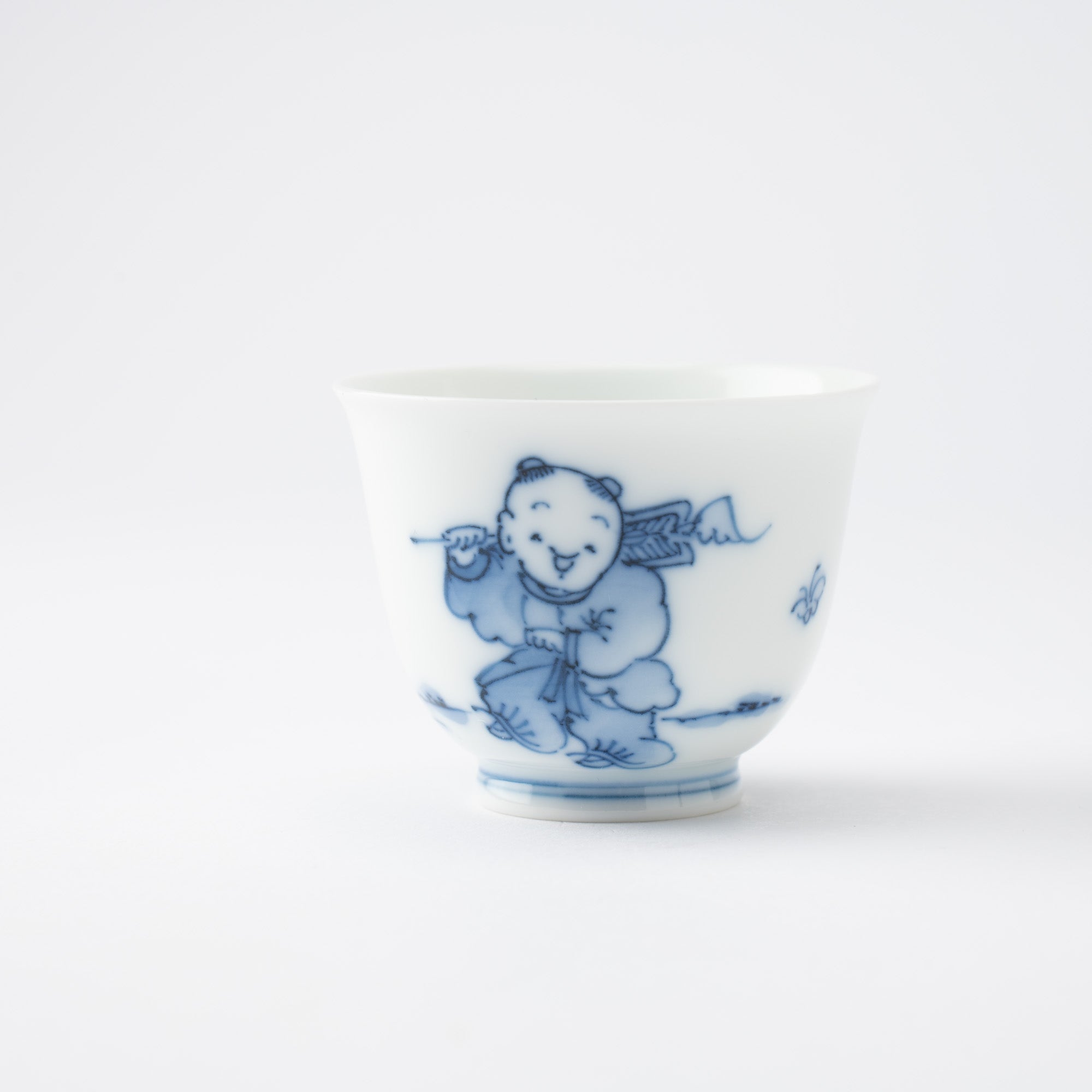
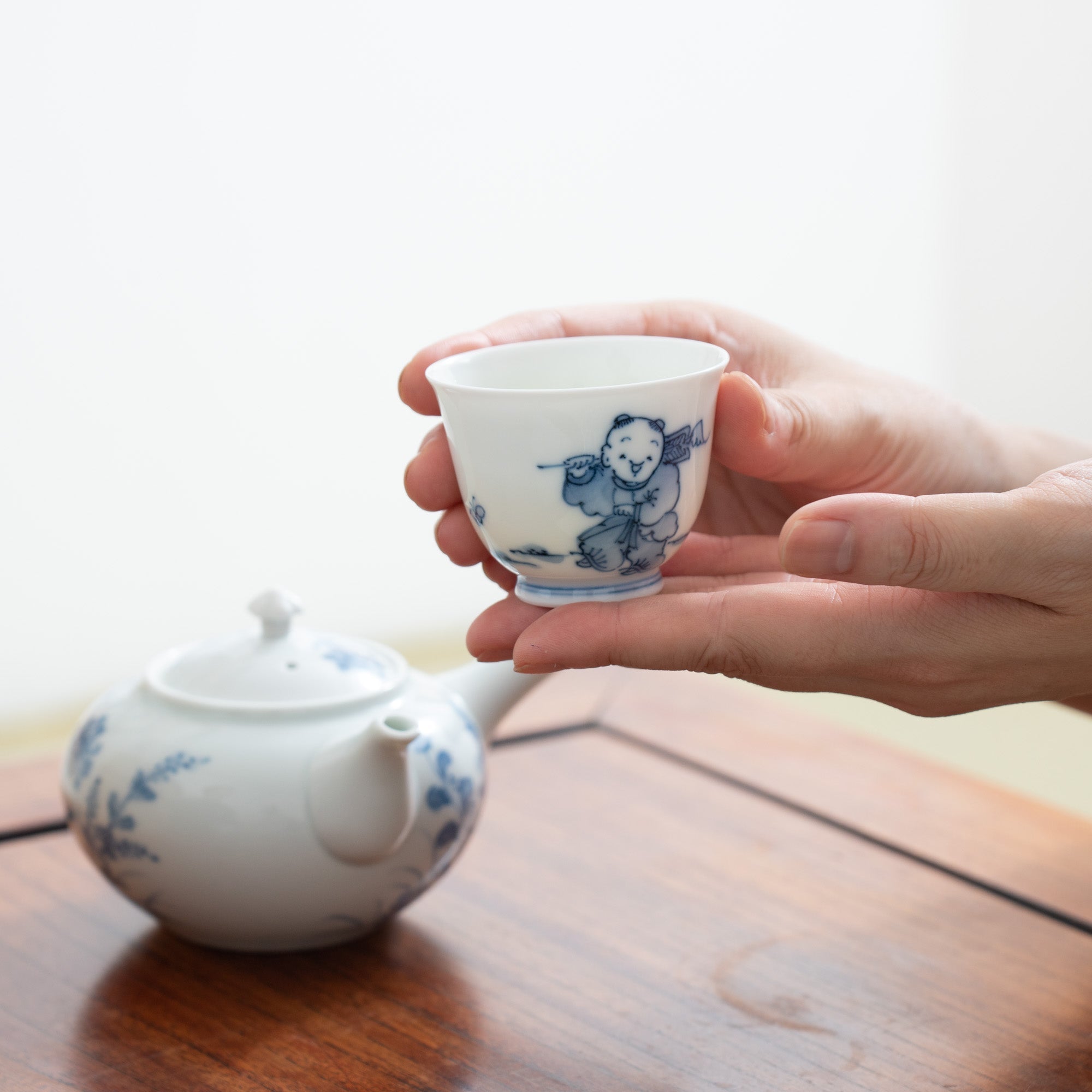
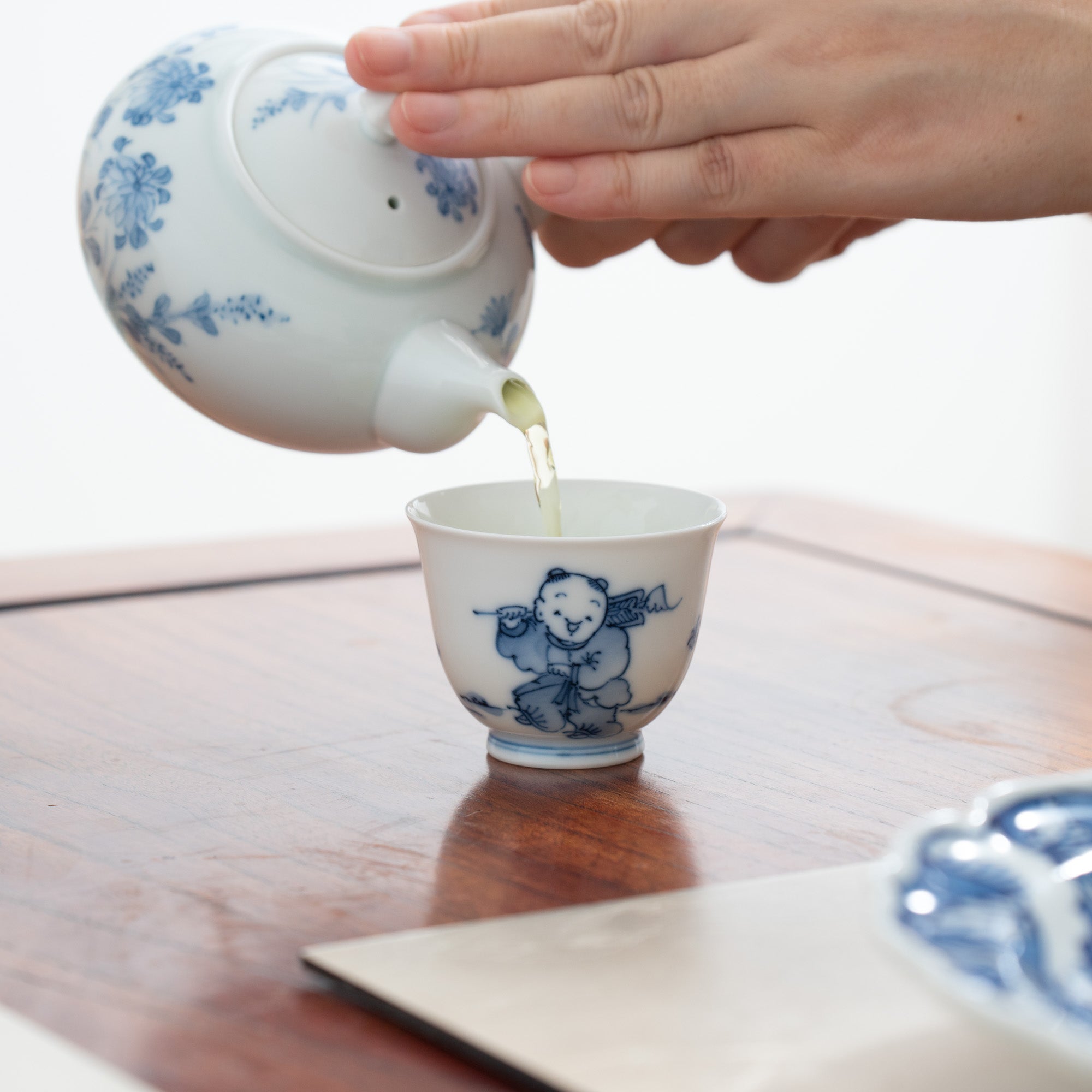
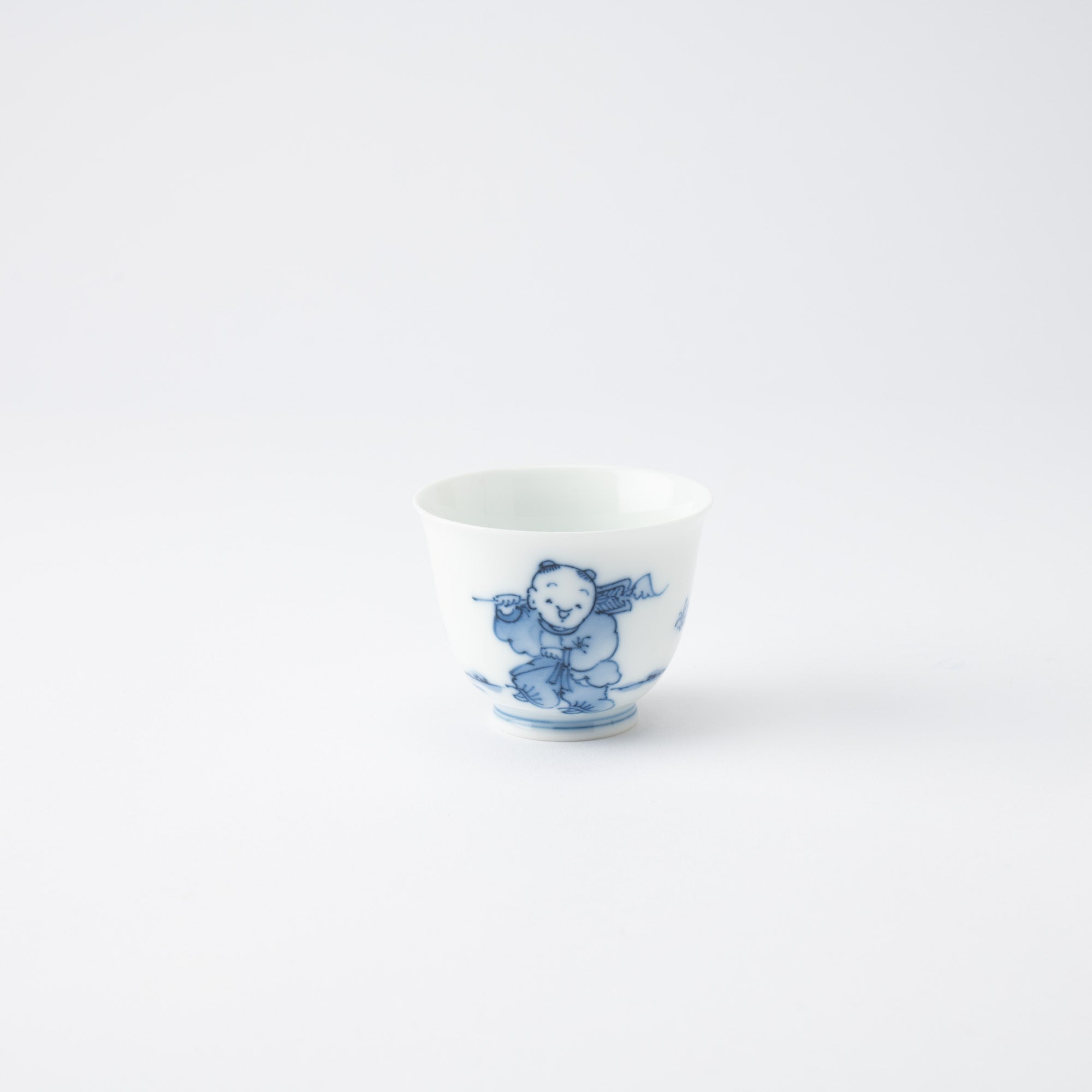
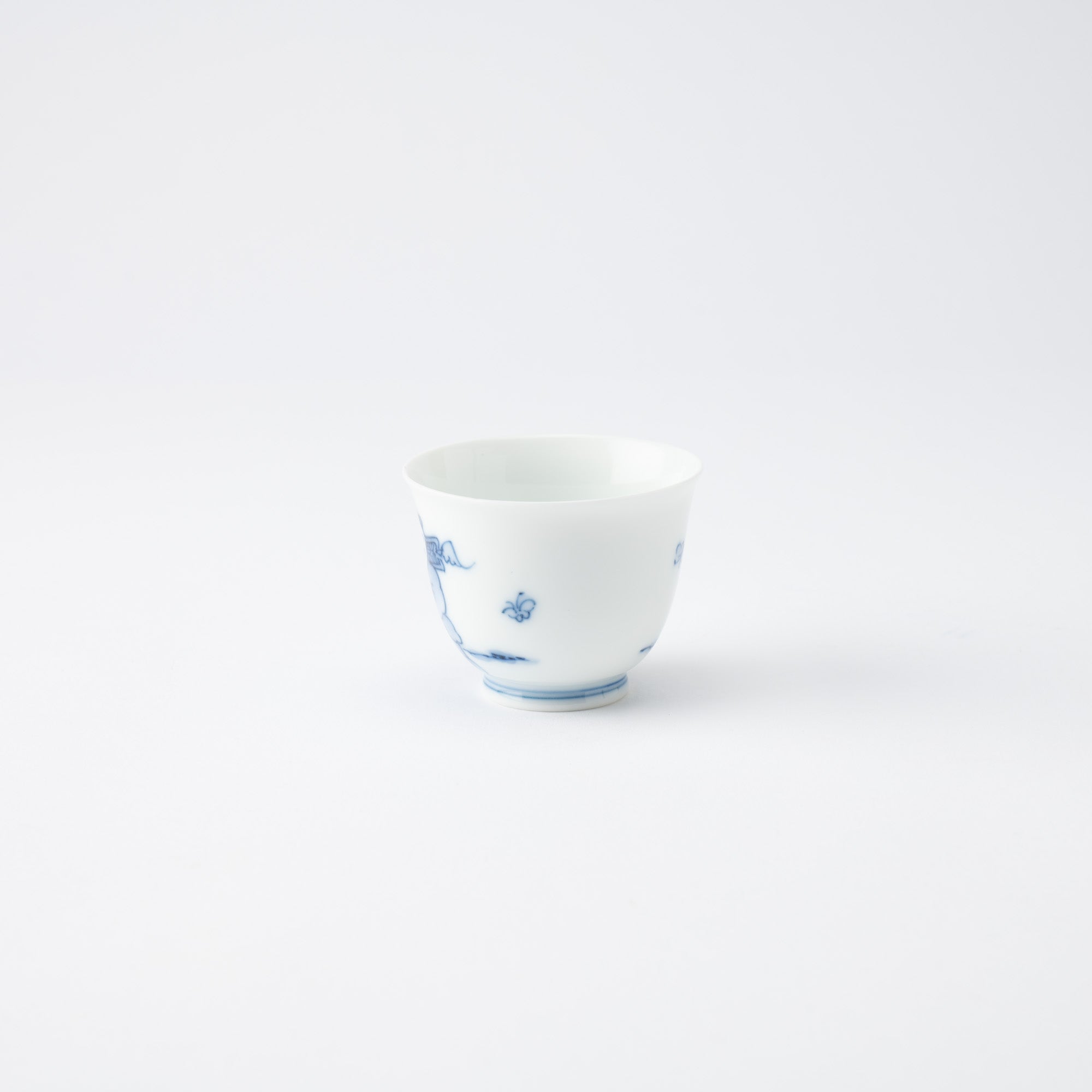
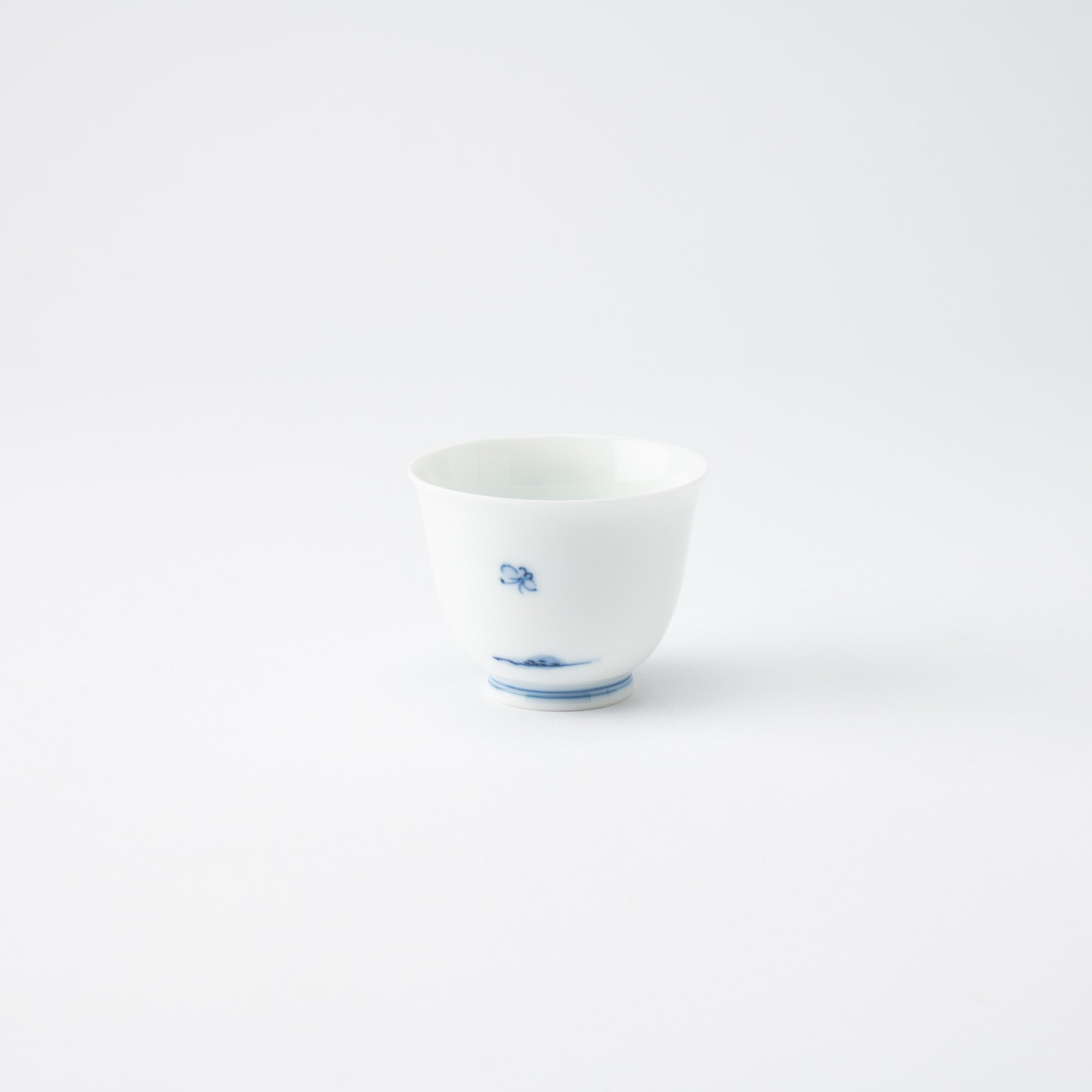
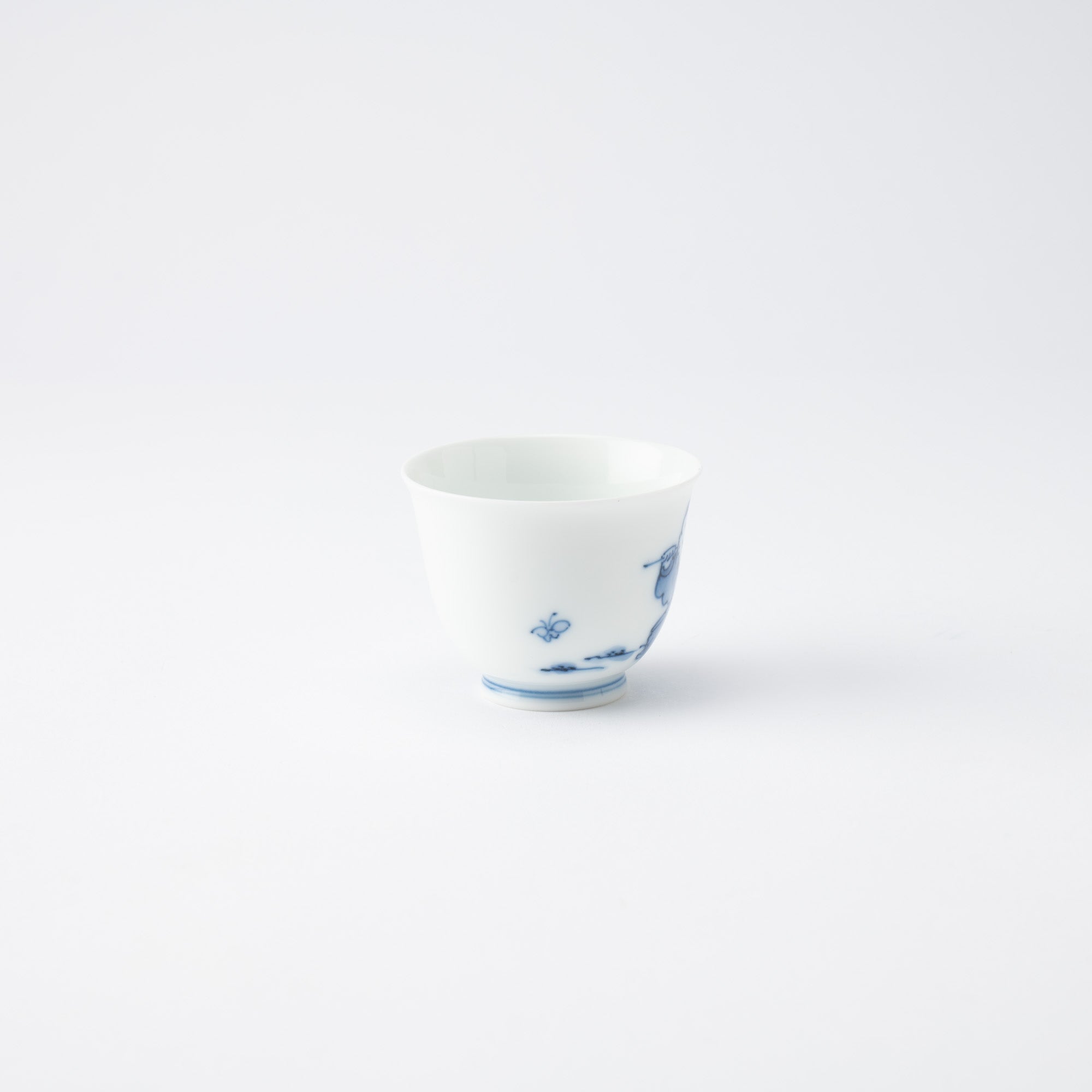
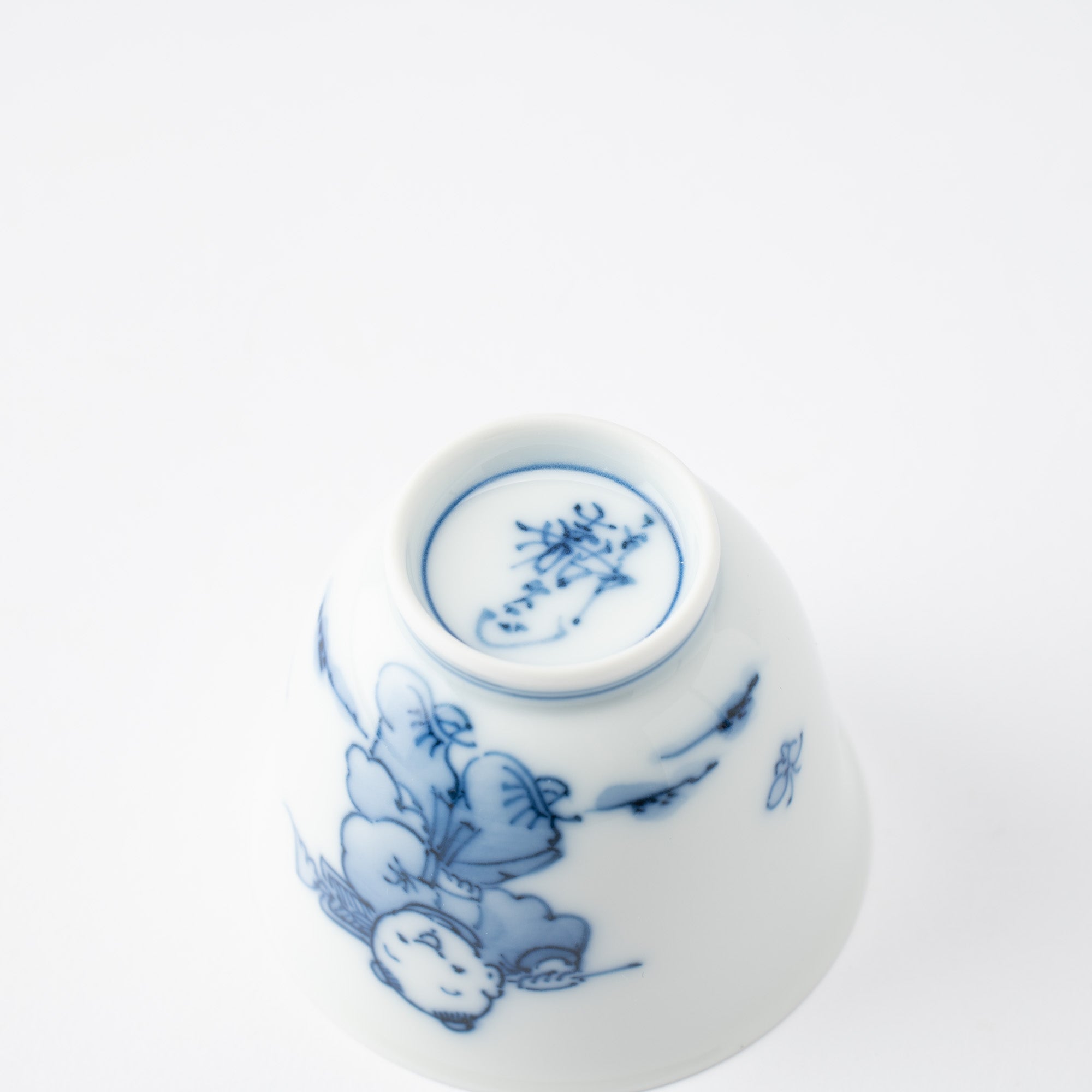
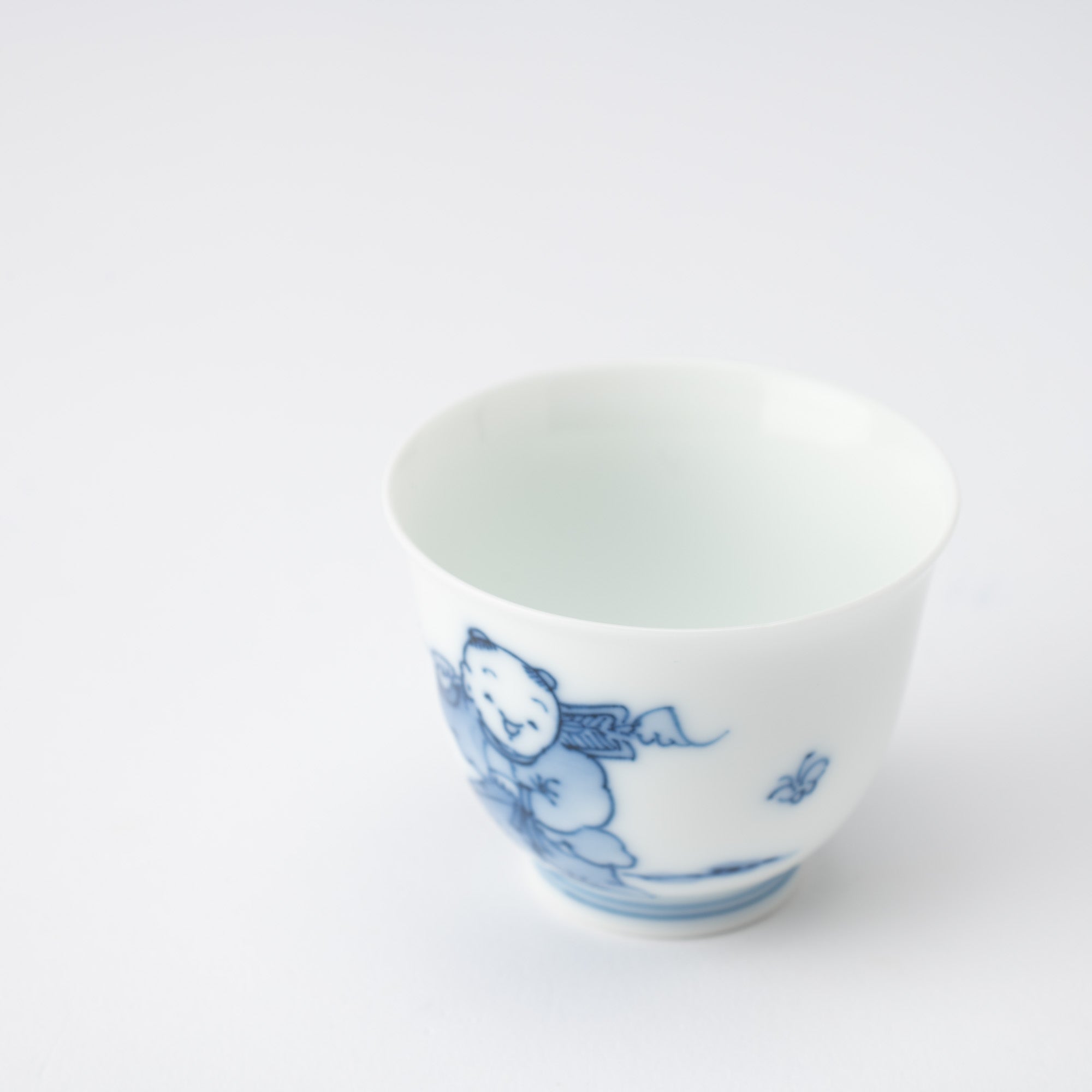
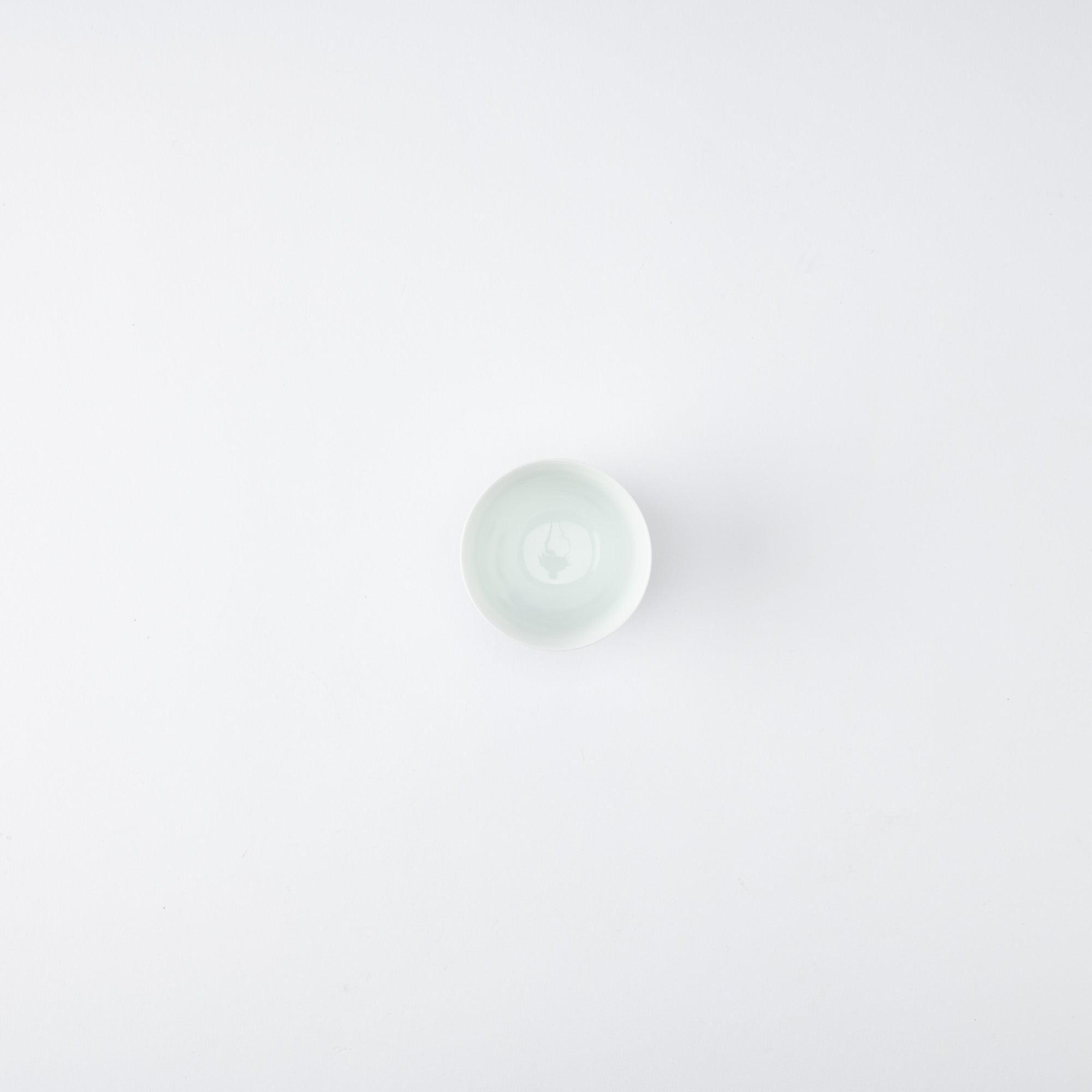
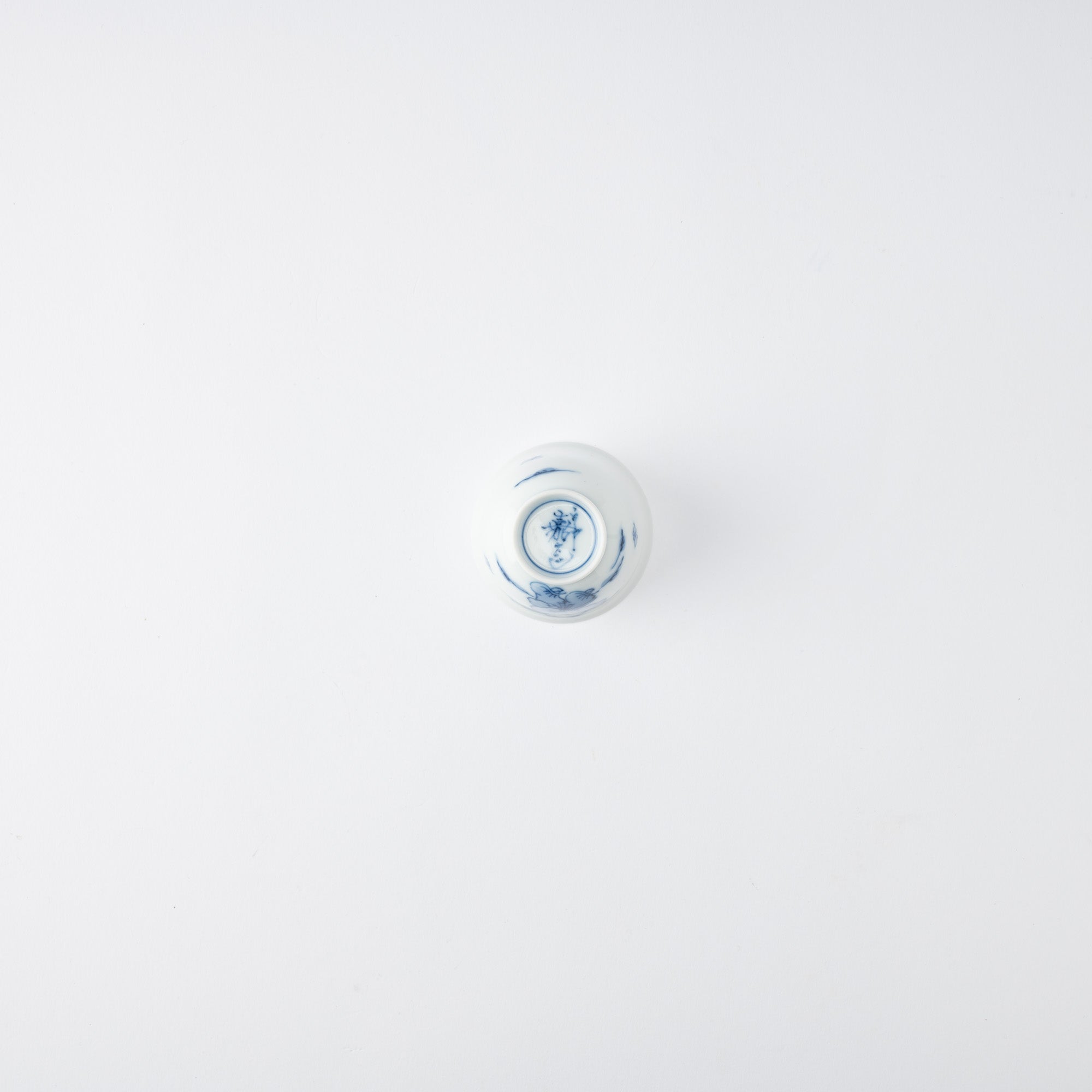
Japanische Teetasse Karako
Estimated Shipping Widget will be displayed here!
Diese prächtige und papierleichte japanische Teetasse ist ein schönes Beispiel für traditionelle Sometsuke blau-weißes Porzellan. Das Sonnenlicht erzeugt einen bezaubernden Effekt, wenn es durch die weiche, zarte Durchsichtigkeit des dünnen weißen Porzellans der Teetasse fällt.
Diese Teetasse zeigt die charmante und lebendige Karako - Zeichnungen chinesischer Kindermalereien, die eines der Hauptmotive der Mikawachi-Keramik sind. Die sorgfältig und gekonnt gemalten Karako-Motive vermitteln Freude und Verspieltheit. Die handgemalten Karako sind in sanften Blautönen gehalten und fangen die Unschuld und Lebhaftigkeit der Kinder ein.
Die Blautöne weisen eine exquisite Abstufung auf, die durch das sorgfältige Auftragen der Farben durch erfahrene Handwerker mit in Kobaltpigment getränkten Pinseln erreicht wird. Dadurch fließt die Farbe natürlich auf das Porzellan und „sinkt“ in den Ton, wodurch ein sanfter und weicher Blauton entsteht. Die Umrisse der Karako werden mit hoher Präzision und Sorgfalt gezeichnet, wobei weiche und feine Pinsel verwendet werden, um die Figuren und ihre spielerischen Aktionen detailliert darzustellen.
Diese bezaubernde Tasse eignet sich perfekt zum Genießen von Tee oder Sake und bereichert Ihr Trinkerlebnis mit ihrem warmen, feinen, handbemalten Porzellan. Sie dient auch als schönes Dekorationsstück, egal ob am Fenster oder auf einem Regal, wo das warme Sonnenlicht das feine Porzellan und das bezaubernde Karako-Design optimal zur Geltung bringt.
EINZELHEITEN
| Quantity | 1 |
| Size | D 5 cm(2.0 in) x H 6 cm(2.4 in) |
| Capacity | 60ml (2.0fl oz) |
| Material | Porcelain |
| Microwave | Yes |
| Dishwasher | Yes |
Hersteller / Marke
Der Kakusho-Ofen ist ein historisch prestigeträchtiger Ofen, der in der Edo-Zeit (1600 n. Chr.–1868 n. Chr.) der Herrschaft der Hirado-Domäne diente. Der Kakusho-Ofen hat die traditionelle Kunst der Sometsuke, blaue Designs auf weißem Porzellan, seit mehr als 300 Jahren.
Ihr leichtes und elegantes Porzellan fühlt sich glatt an und hat einen weichen und sanften Blauton, der angenehm für das Auge ist.
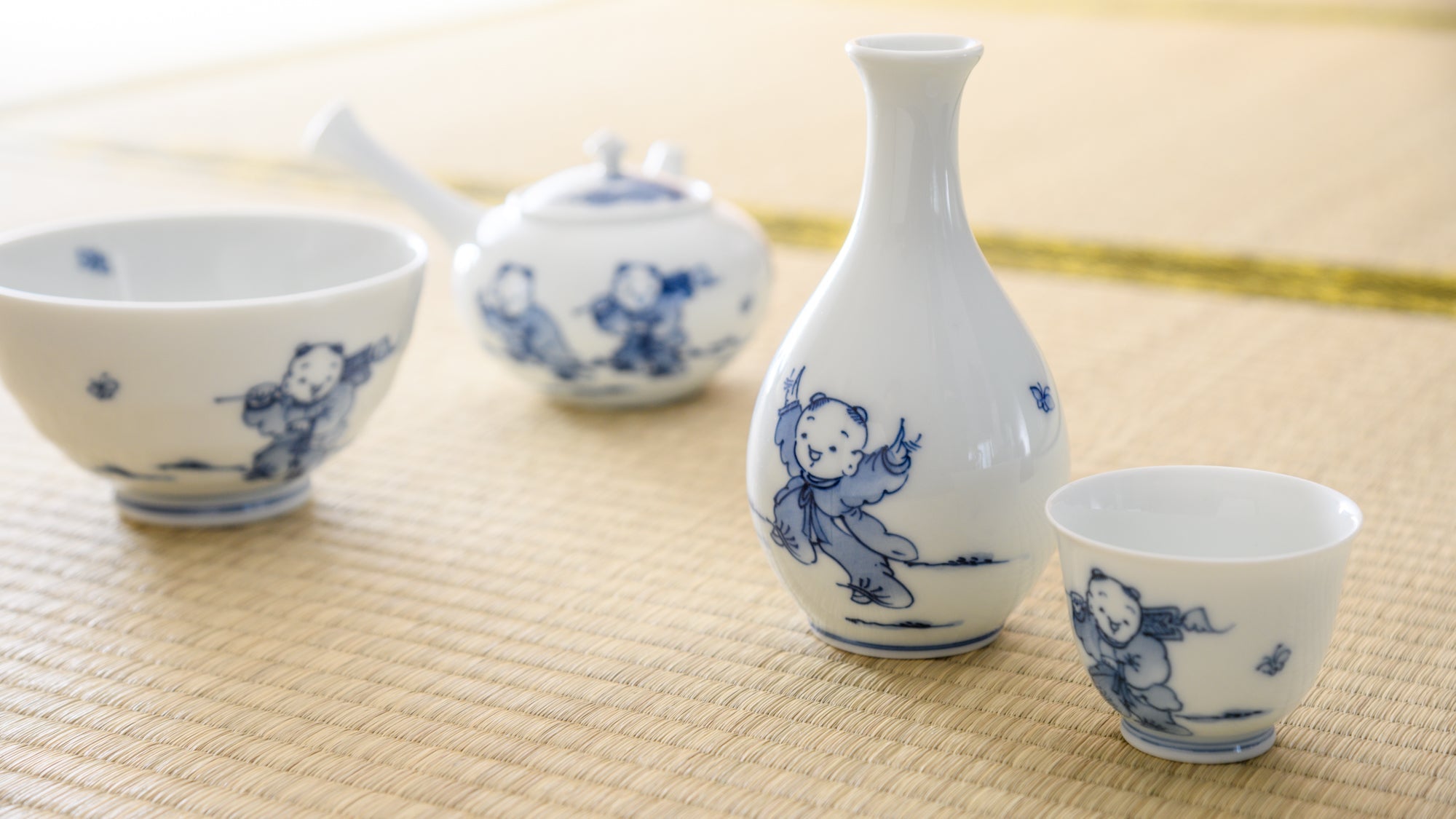
Kunsthandwerk
Mikawachi-Keramik, auch Hirado-Keramik genannt, ist eine Keramik aus Sasebo, Präfektur Nagasaki, Japan. Bekannt für ihr durchscheinend weißes Porzellan, erfreute sie sich während des Trends zu japanischem Kunsthandwerk im Westen im 20. Jahrhundert großer Beliebtheit in Europa. Mikawachi-Keramik zeichnet sich durch filigrane Modelliertechniken aus, die die Grenzen von Porzellan erweitern, wie beispielsweise durchbrochene und Reliefschnitzereien, und durch ihre wunderschöne Bemalung, die wie ein einziges Kunstwerk wirkt.
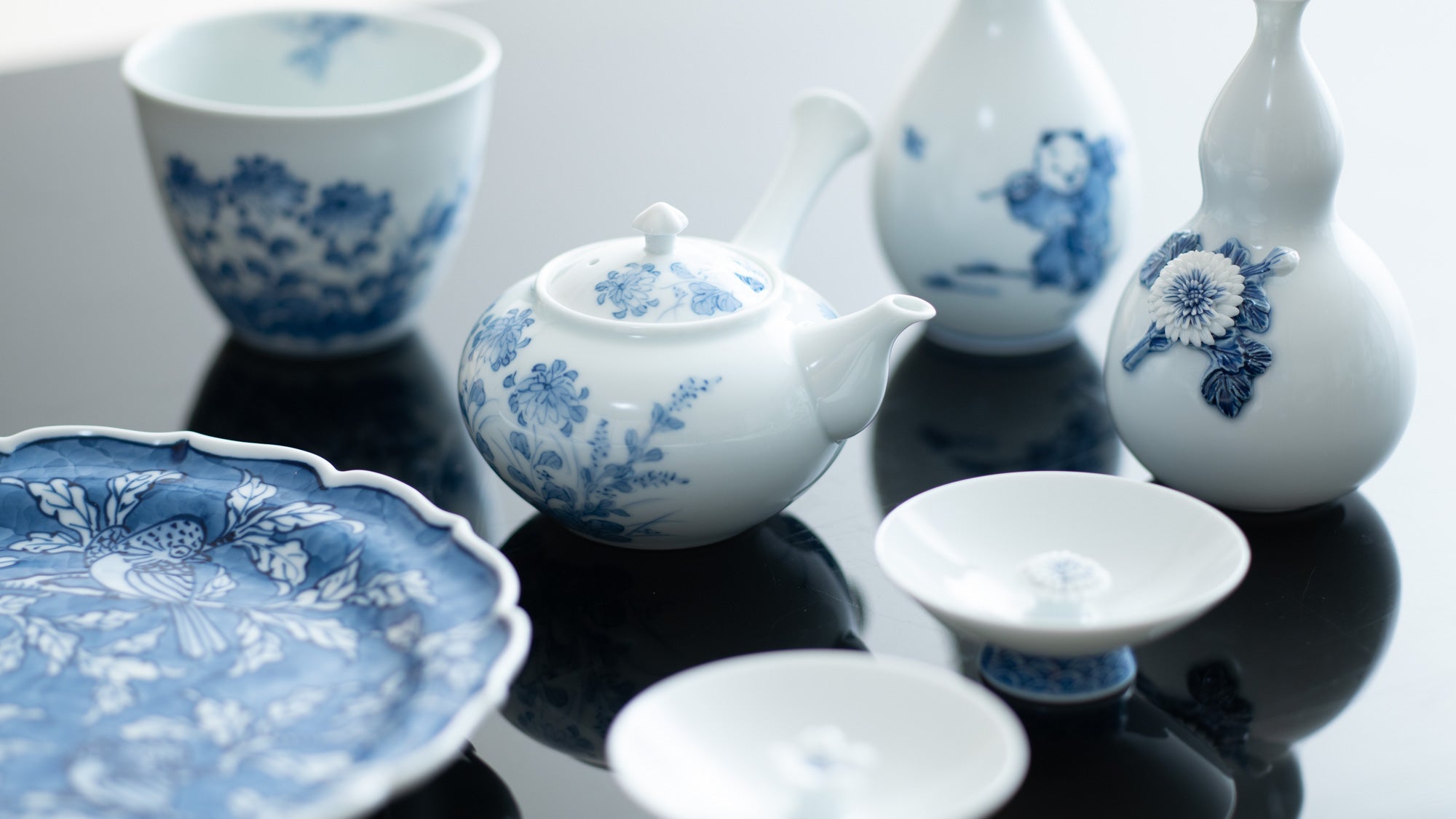
Optionen auswählen















Japanische Teetassen
Wir haben sorgfältig eine Sammlung japanischer Teetassen aus ganz Japan zusammengestellt, um Ihre ruhige Teestunde zu verschönern. Diese Teetassen sind nicht nur optisch beeindruckend, sondern auch praktisch und somit perfekt für den täglichen Gebrauch.
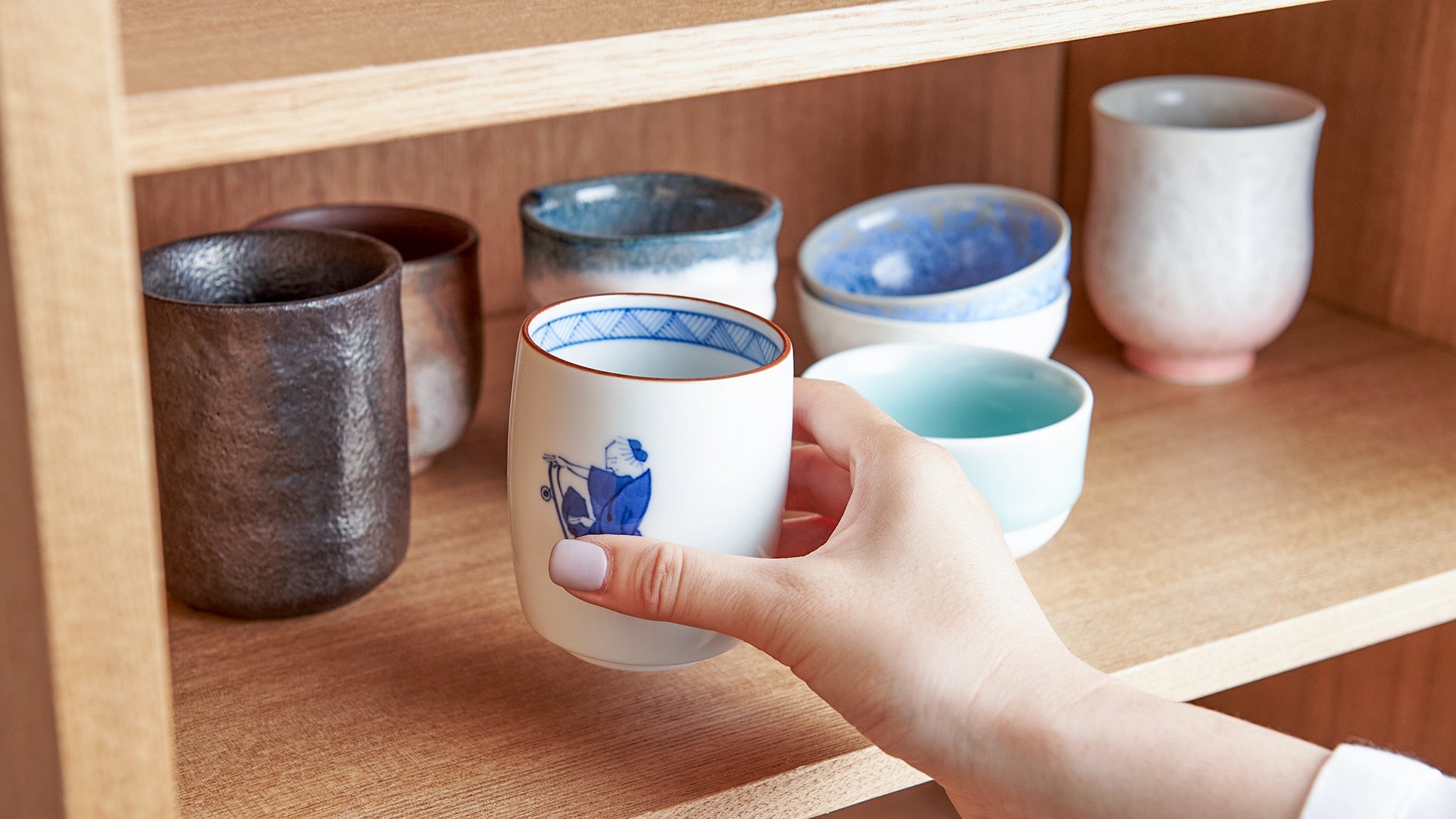
Sometsuke
Sometsuke ist eine dekorative japanische Töpfertechnik, auch bekannt als blau-weiße Keramik. Dieser klassische Stil wird weltweit für seine Eleganz geschätzt. Wir bieten eine große Auswahl an blau-weißen Tellern, Schüsseln, Trinkgeschirr und vielem mehr.
Die optisch ansprechende Farbgebung aus kobaltblauem und weißem Porzellan von Sometsuke bringt die Schönheit von Speisen zur Geltung und lässt sich problemlos mit einer Vielzahl von Geschirr kombinieren. Die feine, glatte Oberfläche und das leichte Tragegefühl sorgen für ein noch angenehmeres Benutzererlebnis.
